
views
X
Research source
The Indian Constitution doesn't allow dual citizenship, so if you want to retain citizenship of India after becoming a citizen of another country, you can become an Overseas Citizen of India (OCI) cardholder, which entitles you to a multiple-entry lifetime visa to enter the country.[2]
X
Research source
Citizenship by Naturalization

Live in India as a legal resident for at least 12 years. This 12-year period includes the 12 consecutive months immediately before you file your application for citizenship, then 11 years total within the 14 years before that. For example, suppose you moved to India as a legal resident in 2010. Provided you continued to live in India for the next 12 years, you'd be eligible for citizenship in 2022.

Learn one of the national languages of India. As of 2021, there are 22 different languages listed in the Eighth Schedule to the Constitution—and English is not one of them. To become a naturalized citizen, you must be able to demonstrate that you have "adequate knowledge" of one of these languages. Languages recognized include Assamese, Bengali, Gujarati, Hindi, Kannada, Kashmiri, Konkani, Malayalam, Manipuri, Marathi, Nepali, Oriya, Punjabi, Sanskrit, Sindhi, Tamil, Telugu, Urdu, Bodo, Santhali, Maithili, and Dogri. To prove proficiency, you'll need 2 language certificates from a recognized educational institution or language organization.

Announce your intention to apply for citizenship in a local newspaper. Publish the announcement in the same newspaper on 2 different dates or in 2 different newspapers on the same date. Write the announcement in the same language you've got language certificates for. Keep clippings of the announcement from the newspapers. You'll need them for your application.

Get 2 character affidavits from Indian citizens. These affidavits should be written in the same language as the one you've got language certificates for. Write an affidavit on your own behalf as well, also in the same language. The affidavits basically describe you as a person with good character who would be an asset to India as a citizen. In your own affidavit, you might also describe why you want to become a citizen of India. Each affidavit must be signed by the person who wrote it in the presence of a notary.
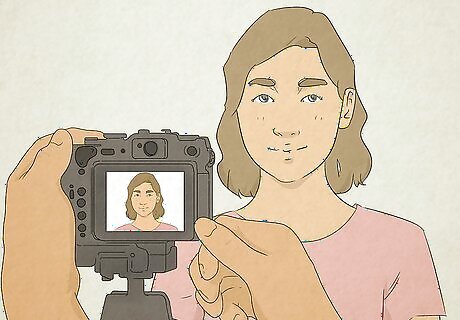
Have a passport photo taken. Go to a professional passport photographer to get your photograph taken so you can be sure it meets all the requirements. You'll need at least 4 copies—1 for your application and 3 after your application is accepted.
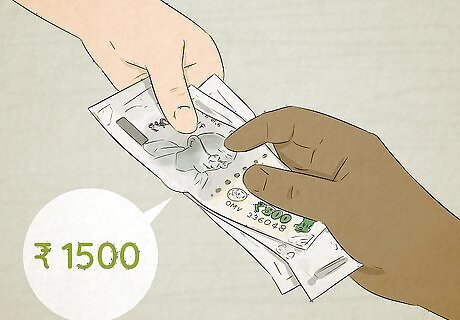
Pay your application fee. As of 2021, the application fee for a citizenship application is Rs. 1500. Deposit this amount in the State Bank of India under "0070-Other Administrative Services-Other Services-receipts under the Citizenship Act." Keep the Bank Challan as a receipt. You'll need to attach a copy of it to your application.

Scan your documents and photo. If you're going to apply for citizenship online, you'll need to upload digital copies of all the documents you'd normally submit with your application. If you're planning on submitting a paper application in person, you don't need to scan anything—but you should still take a moment to gather the documents you'll need. For an application for citizenship by naturalization, attach the following: Valid foreign passport Residential permit/LTV Bank Challan for Rs. 1500 deposited in the State Bank of India under heading number "0070-Other Administrative Services-Other Services-receipts under the Citizenship Act" 3 affidavits (1 from yourself, 2 from Indian citizens) 2 language certificates 2 newspaper clippings of different dates or from different newspapers

Go to https://indiancitizenshiponline.nic.in/ to fill out the application online. Click on the link that says "Naturalization As a Citizen of India under section 6(1) of the Citizenship Act, 1955," then click the button that says "Apply Online." Provide information about yourself, your parents, your employer, and your residence in India. Click "Save and Next" to continue the application. If you don't want to apply online, you can print this form, sign it, and submit it along with your documents to your local district magistrate or deputy commissioner.

Submit your completed application and documents in person. Print your application and sign it, then take it along with the original documents you scanned to the nearest district magistrate or deputy commissioner. They will verify your identity and documents. If you're not sure where the office is, search online for "district magistrate" with the name of the city or town where you live.
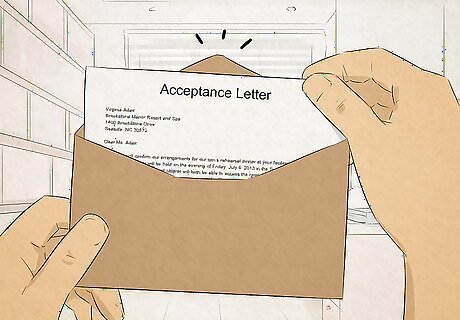
Wait for your acceptance letter. The district magistrate or deputy commissioner where you live submits your application to the Ministry of Home Affairs (MHA) through your state government or union territory. Provided you've fulfilled all the necessary requirements, you'll get an acceptance letter in the mail—it can take several months to complete this process. After the district magistrate or deputy commissioner reviews your application, they forward it to your state government or union territory administration. They have 60 days to do that. Then, the state government or union territory administration has 90 days to forward your application to the MHA.
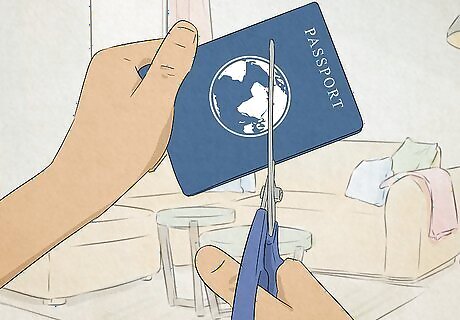
Renounce your citizenship to your home country. Typically, you can do this at the nearest embassy or consulate of your home country. Each country has different procedures, but a consular officer will be able to tell you what to do. Get a certificate from the consular officer that states you renounced your citizenship. Don't renounce your citizenship until you know that your application for Indian citizenship has been accepted. Until then, you'll still need your passport from your home country.

Provide your final documents to the MHA. Your acceptance letter includes the amount of the fee you'll need to pay as well as the documents you need to submit to the MHA. At a minimum, you'll need to provide the following: Certificate of renunciation of your foreign citizenship Challan as proof of deposit of the fee listed in your acceptance letter 3 passport-sized photos 3 samples of your signature

Take the oath of allegiance and get your certificate. The MHA issues your certificate as soon as they accept your application. From that date, you have 3 months to take the oath of allegiance. When you take the oath, you'll get your certificate of naturalization and can apply for an Indian passport. You'll pay an additional fee of Rs. 500 for the administration of the oath.
Citizenship by Registration

Live continuously in India for at least 7 years. That 7-year period must include the 12 months immediately preceding your application. The other 6 years can be within the 8 years preceding that 12-month period. For example, if you married an Indian citizen in 2010 and moved to India to live with them, you would be eligible to apply for citizenship in 2017.
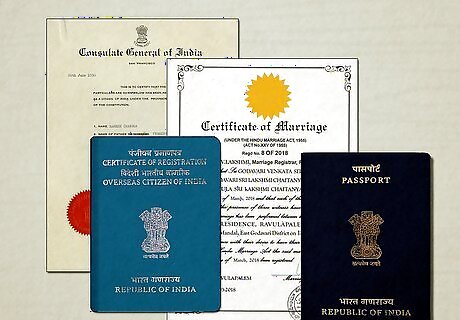
Gather documents that prove you're eligible for citizenship by registration. At a minimum, you'll need your foreign passport and your residence permit. The other documents that you'll need depend on the reason you're claiming citizenship by registration. The common reasons to request citizenship by registration include: Your parents are or were Indian citizens: a copy of your Indian parent's birth certificate or Indian passport You married an Indian citizen: a copy of your marriage certificate and your spouse's birth certificate or Indian passport Your parents are naturalized or registered Indian citizens: a copy of your parents' Indian citizenship certificates You were previously an Overseas Citizen of India (OCI): a copy of your OCI card

Go to https://indiancitizenshiponline.nic.in/ and choose the appropriate form. This page includes a list of different sections of the 1955 Citizenship Act under which you might qualify for citizenship by registration. Click on the one that corresponds with your situation. For example, if you married an Indian citizen, you would choose "Registration As a Citizen of India Under Section 5(1)(c) of the Citizenship Act, 1955 Made by a person Who is/has been married to a Citizen of India."

Fill out your application for citizenship online. The application requires you to provide basic information about yourself, your current citizenship status, your residence in India, and your employment. You'll also provide details related to the reason you're claiming citizenship by registration. Scan the documents that support your application so you can submit them electronically as well.
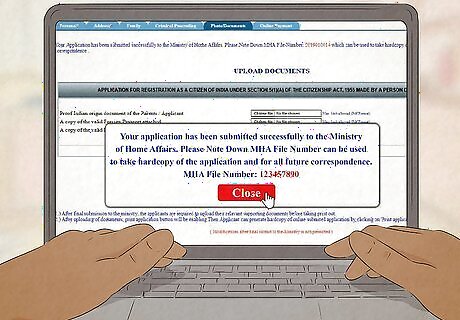
Submit your application electronically to the Ministry of Home Affairs (MHA). Look over your answers carefully before you submit your application—once it's submitted, you won't be able to go back and make any changes. Then, click the button to complete the process. Print a copy of your application after you submit it and sign the hard copy. Copy down the confirmation number that you get when you submit your application. You can use it to check the status of your application.

Get a passport photo taken. Go to the nearest professional passport photographer so you know your photo will meet the MHA specifications. You'll need at least 1 print copy to attach to the hard copy of your application.
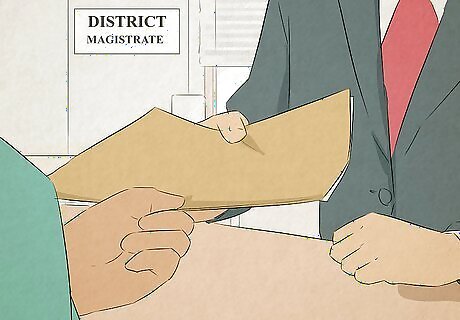
Take your paperwork to the nearest district magistrate or deputy commissioner. Attach a copy of your passport photo to the application you signed. Along with your application, bring the original documents that you scanned to submit to the MHA electronically. The district magistrate or deputy commissioner will verify your identity and confirm the validity of your documents. If they need any other documents to process your application, they'll let you know.
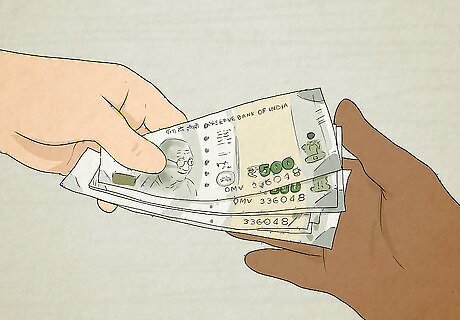
Pay your registration fee. You'll get a letter when your application is accepted that includes the total you owe to complete your citizenship by registration. As of 2021, this fee is usually Rs. 5,000, although there are some exceptions. If you're claiming citizenship by registration because you married an Indian citizen, the fee is Rs. 10,000. For minors claiming citizenship by registration, the fee is reduced to Rs. 3,000.
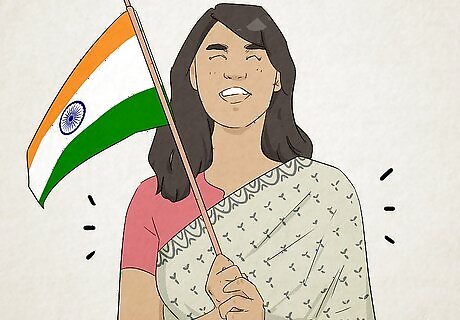
Complete the citizenship ceremony to get your registration certificate. Make sure you renounce your citizenship to any other country before you take your oath. Bring a certificate confirming your renunciation of citizenship to your ceremony. Unlike citizenship by naturalization, you don't necessarily have to "prove" yourself to get citizenship by registration. There's no language requirement, nor do you have to demonstrate that you're a person of good character.
Overseas Citizenship
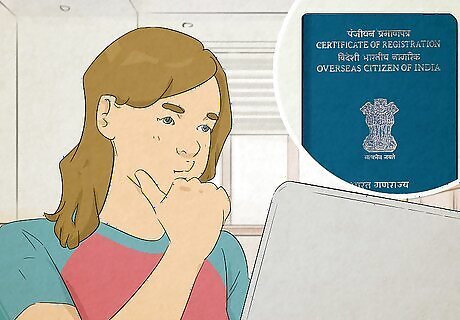
Confirm your eligibility for an Overseas Citizen of India (OCI) card. Generally, the OCI cardholder program is available for Indians who are citizens of another country. You're eligible if you were previously an Indian citizen, or if one of your parents, grandparents, or great-grandparents was an Indian citizen. You're also eligible if your spouse is or was an Indian citizen or OCI cardholder. You are not eligible for an OCI card if you are now, or ever were, a citizen of Pakistan or Bangladesh.
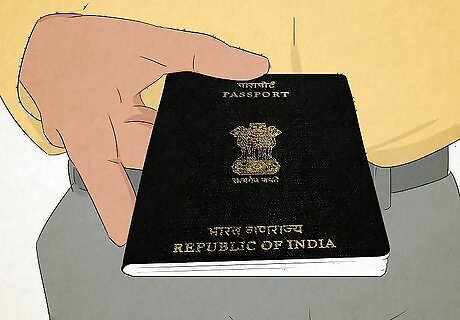
Renounce your Indian citizenship if you haven't already done so. If you've become a citizen of another country, you can't also be a citizen of India, because India doesn't recognize dual citizenship. Additionally, if you are an Indian citizen, you aren't eligible for an OCI card (you wouldn't need one). The nearest Indian embassy or consulate can get you an application for renunciation of Indian citizenship. Get this and fill it out—you can submit it along with your application for an OCI card. You might be charged a penalty if you continued to hold an Indian passport after acquiring citizenship in another country, even if you never used your passport.

Get a passport photo made for your OCI card. Get a digital copy of the photo so you can upload it for your online application. While you can get print copies of your photo as well, these aren't necessary for the application because the entire process is digital.
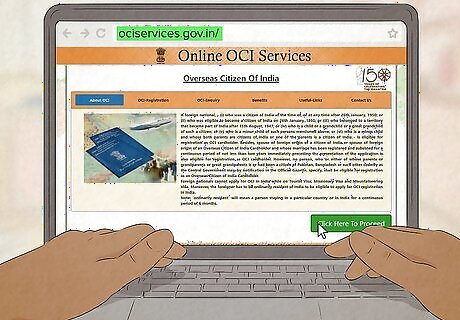
Go to https://ociservices.gov.in/ to apply for your card. On the homepage, read the introductory paragraph explaining who is eligible for an OCI card, then click the green button that says "Click Here to Proceed." You'll be taken to the online application. Answer all questions on the application completely and honestly. The Indian government only accepts online applications. You can't get an application from your local Indian embassy or consulate.

Scan the documents required to support your application. At a minimum, you'll need at least one document that proves your present citizenship (typically a valid passport) and at least one document that proves your current address (typically a utility bill or lease). In addition, you'll need a document that proves the reason you're entitled to an OCI, such as: Your marriage certificate, if you're married to an Indian citizen or OCI cardholder Your Indian parent's, grandparent's or great-grandparent's birth certificate, Indian passport, or OCI card Your birth certificate, if you were born in India

Bring your original documents to the nearest Indian embassy or consulate for verification. Take with you all of the documents that you scanned and submitted with your application. When your documents are verified, you'll also pay the application fee of US $275 or the equivalent in local currency. A consular officer might discuss your application with you. However, no formal interview is required unless you're applying for an OCI card on the basis of your marriage to an Indian citizen or OCI cardholder.

Return to the embassy or consulate to get your OCI card. A consular officer will contact you when your OCI is ready. You typically need to take your current passport, then come back to get it with your OCI inside. Your OCI provides you with unlimited entries into India. Your OCI is valid for your lifetime. However, any time you get a new passport, you'll have to get your OCI re-issued as well.




















Comments
0 comment